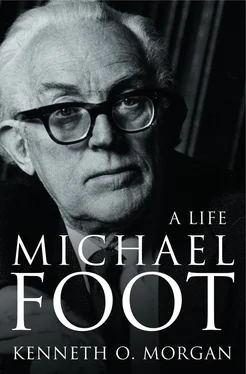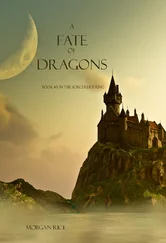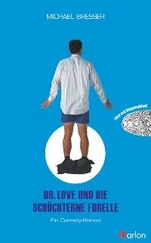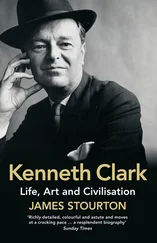One way and another, the Standard years meant that Foot was having a thoroughly good, comfortable war. Jill Craigie was later to twit him as a ‘Mayfair socialist’. He had built up an impressive social reputation as a man worth knowing. He moved in attractive intellectual and literary circles, friendly with a rich array of writers like Koestler, Orwell, H. G. Wells and Moura Budberg and others. Koestler’s friend Dylan Thomas, then living in Chelsea and hanging around its pubs, was also a visitor to Foot’s top-floor flat at 62 Park Street, Mayfair, keeping pace with Koestler in drinking the drinks cabinet dry. As a younger man Foot kept up an extraordinarily unhealthy lifestyle – no exercise, little fresh air, a good deal of drink, mainly of spirits, and smoking sixty to seventy Woodbines a day, which did not help his asthma. But he remained remarkably energetic nevertheless. He also acquired a new, much closer girlfriend, Connie Ernst, a dark-haired Jewish New Yorker working in London for the US Office of War Information. With her he had a serious relationship from 1943 onwards, and he was to propose marriage on a visit to New York in 1945. They became for two years a consistent partnership, and would invite friends to dine with them at the White Tower, a Greek restaurant in Soho. Through Connie he got to know other American intellectuals, notably Ernest Hemingway, whom he greatly liked, and his second wife Mary Welsh. It was Mary who helped him in renting the flat in Park Street (drawn to his attention by Connie Ernst). Here he could live in some style, pore over Swift and Hazlitt, listen to music, play chess with Koestler and others. Nor was the rent crippling – just thirty shillings a week. There he stored some of his precious wartime literary purchases, many bought from Kimche, including a first edition of Gibbon’s Decline and Fall of the Roman Empire . To the joy of Isaac, Michael’s rising salary enabled him to pursue his literary enthusiasms further, and to buy S. S. Howe’s famous library of volumes of Hazlitt. The master essayist’s thoughts gripped him with ever greater intensity (and as a result often featured in the columns of the Evening Standard) . Foot was later to tell Edmund Blunden how being a ‘worshipper’ of Hazlitt led to a strong interest in Leigh Hunt and his Examiner , subjects of two of Blunden’s own books which Foot enormously enjoyed: ‘My criticism of your book on Leigh Hunt was that Hazlitt did not come out as well as his blindest admirers insist he must. But that is a mere trifle compared with so much on the other side.’ 17
In many respects there was a remarkable ferment of intellectual life during the war. It was one of the great formative periods in modern British history, when creative writers, commentators, planners, economists and artists came together with new blueprints for reconstruction and new dreams of renewal. Michael Foot, man of words and putative man of action, was a pivotal figure in it.
But by late 1943 it was clear that his somewhat unnatural base in the Tory Evening Standard , and his filial relationship with Beaverbrook, were undergoing a change. After all, Foot was Labour candidate for Plymouth, Devonport, and a post-war election was perhaps on the horizon. In addition, he was increasingly restless for a wider crusading role, far beyond the editorial desk. His book published by Gollancz in late 1943, The Trial of Mussolini , written once again in breach of his editorial contract with the Standard , was a sign of this and caused Beaverbrook some anxiety. He remained keen to retain Foot’s services, and offered him a new role instead, as feature writer and book reviewer. Foot’s generous, even affectionate, response on 1 November 1943 suggested that a parting of the ways might not be too far off. He suggested two possible courses of action to Beaverbrook. The first was continuing to act as editor of the Standard for just one more year, since he intended to fight Devonport for Labour at the next general election: ‘I certainly intend to become a politician and to devote what energies I possess to the annihilation of the Conservative influence in politics.’ The second was that he continue to write for Beaverbrook newspapers on such terms as their owner proposed, so long as ‘I am not required to do anything in defiance of my views and that I have freedom to engage in such nefarious activities as I choose in writing books or on the platform’. 18 They chose the first course, amicably enough, but things were getting progressively more difficult, especially after D-Day the following June, which made the ending of the war a far more proximate possibility.
So Foot wrote a letter of transparent honesty and integrity to Beaverbrook a few days later:
The main idea I have is that your ideas and mine are bound to become more and more irreconcilable … There does not seem to be much sense in my continuing to write leaders for a newspaper group whose opinions I do not share and some of whose opinions I strongly dissent from … The leaders which I now write are hardly worth writing since they are non-commital and from my point of view I am associated with a newspaper group against whose policies (but not against the proprietor) I am resolved to wage perpetual war. Somehow things were different before. The compromise worked and certainly greatly to my advantage. But I do not see how it could work very much longer.
Foot felt, ‘as an ambitious and intransigent socialist’, that he could find another newspaper in which to express himself He did not see how Beaverbrook could reasonably run a column by him: ‘At the present I am engaged in writing stuff in which I have no particular interest, and I would like to do something different.’ He therefore asked Beaverbrook to release him from his obligations to newspaper and owner. 19 Beaverbrook did release him, in tones of sadness and regret. It was a deeply civilized break-up on both sides. But it was a peculiarly sharp one. In a few months Foot was denouncing his old patron’s right-wing views with fire and fury in newspaper columns and speeches. Much more completely than before, he was his own man.
He now threw himself into an even more frenetic range of activities than before. Chief amongst them, given his now perceived talent as part-author of Guilty Men , was inevitably the writing of books. He produced two short but effective tracts in the later wartime period, both highly partisan in a way that the earlier book never was. Each was written at Pencrebar. The Trial of Mussolini , as noted, appeared without Beaverbrook’s knowledge and caused him concern. It was written, Foot told him, to protest against the hypocrisy of those who denounced Mussolini at his fall but had upheld his views for twenty years previously. The idea came to him at the time of the removal of Mussolini and the appointment of Marshal Badoglio as potential peace-making head of the Italian government in July 1943. Foot visualized the forthcoming post-war trial of the dictator and, using the same theatrical method as in Guilty Men , cast the various pre-war British ministers who had appeased him as witnesses at the tribunal. He had been given much information on circumstances in Italy by the son of Vittorio Orlando, the Italian Prime Minister during the 1919 Paris peace conference. 20 A more profound underlying influence was Ignazio Silone. But the book would really be about British foreign policy, not Italy. He offered the idea once again to Victor Gollancz, who seized it avidly for another of his ‘yellow perils’, as the volumes of the yellow-jacketed Left Book Club were known. He received the manuscript on 20 August, and it was published in October, with a confident print run of 100,000 copies. Foot wrote the book in three weeks. His nom de plume , again, was drawn from classical antiquity – not ‘Cato’ this time but ‘Cassius’, the assassin of an earlier not-so-sawdust Caesar.
Читать дальше












